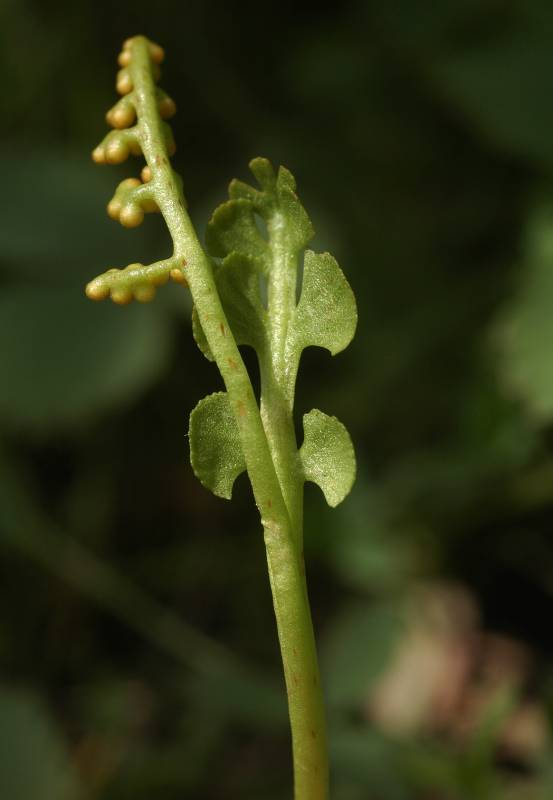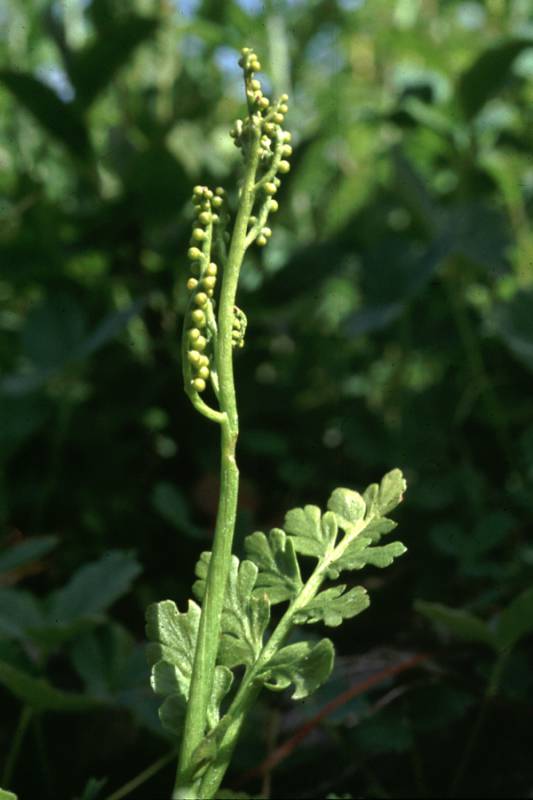Botrychium crenulatum
Botrychium pinnatum
dainty moonwort, scalloped moonwort
northwestern moonwort, St. John
Terrestrial perennials up to 15 cm, from 10 or fewer yellow to brown roots 0.5-1.5 mm in diameter at 1 cm from base.
Trophophore blade bright and shiny, oblong-deltate, 1-2-pinnate, up to 8 cm long and 5 cm broad, stalk 0-2 mm; trophophore pinnae in up to 7 pairs, slightly ascending, space between 1st and 2nd pinnae equal to or slightly greater than the spaces between 2nd and 3rd pairs, basal pinna pair approximately same size and cutting as adjacent pair, obliquely ovate to lanceolate-oblong to spatulate, lobed deeply and regularly or pinnulate, lobed to apex, margins entire to very shallowly scalloped, apex truncate to slightly acute, venation pinnate; sporophores 2-pinnate, 1-2 times the length of the trophophore.
Sporangium nearly completely exposed, borne in 2 rows on pinnate sporophore branches; spore surfaces wrinkled and somewhat warty.
Botrychium crenulatum
Botrychium pinnatum
- Local floras:
BC,
CA,
OR,
WA
- Local Web sites:
CalFlora,
CalPhotos,
Flora NW,
PNW Herbaria
WildflowerSearch
iNaturalist (observations)
USDA Plants Database
- LBJ Wildflower Center
- SEINet
- Plants of the World Online
- Encyclopedia of Life
- Wikipedia
- Google Image Search
- Local floras:
BC,
CA,
OR,
WA
- Local Web sites:
CalFlora,
CalPhotos,
Flora NW,
PNW Herbaria
WildflowerSearch
iNaturalist (observations)
USDA Plants Database
- LBJ Wildflower Center
- SEINet
- Plants of the World Online
- Encyclopedia of Life
- Wikipedia
- Google Image Search



